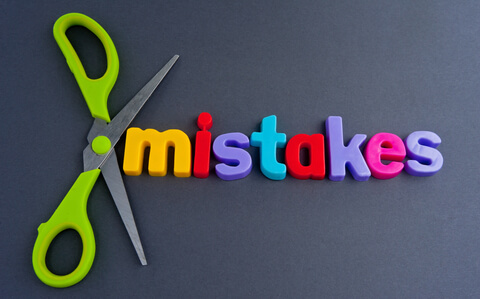Content marketing is an essential component of an overall marketing plan. But successful content marketing doesn’t just happen overnight.
Companies need to put time, thought and effort into the type of content that they produce and distribute. With these three components will come success, provided organizations sidestep certain mistakes.
Here are eight content marketing mistakes to avoid:
1. Not having a content strategy
Having no strategy is a risky approach. Take the time to think through your goals and develop a strategy that will strongly support them. Will there be blogging involved? White papers? Podcasts? Imagery and videos? How often will you publish content? What about social media? There are many components to consider and they should be fleshed out in the planning phase.
Additionally, it is important for a firm to avoid creating marketing channel silos. In other words, do not pay attention to just one channel and ignore others. The Content Marketing Institute suggests: “Think like a media company. The greatest media companies of all time focus on all three legs of a stool – digital content, print content and in-person content.”
Tossing up static content on a website is not enough. Develop a well-rounded strategy, follow it and nurture it.
2. Sporadic content
It is, of course, important to be consistent when publishing content. Stagnant content is not only boring; it will also deter visitors from returning to a website. To avoid this pitfall, set a calendar for new content and stick to it, whether it is daily, every other day or weekly. Having a set schedule where visitors know when new content is published can go a long way in developing an audience and holding its interest.
3. Weak content
It is smart to stick to the established formula in a content strategy, but it is just as important to include some wiggle room to build or introduce new kinds of interesting content. Additionally, you should avoid generic information. Content should contain unique elements to get an audience’s attention. Try adding:
• Infographics
• Current trends
• News
• Podcasts
• White papers
• E-books
Do not be afraid to mix it up. Varied content makes for a dynamic web experience and demonstrates a company’s expertise.
4. Poorly documented claims
Always publish reputable content and include sources to back up any facts, statistics or other objective information. While your clients want to be portrayed as the experts, claims do need to be documented.
5. One-way marketing
Over the decades the primary way businesses promoted themselves was through one-way marketing. Companies spoke and audiences listened. This doesn’t happen much in today’s markets. In fact, consumers spend time in online spaces and expect interaction, significantly making marketing a two-way street.
Through a solid content strategy, businesses can provide helpful hints, fun facts and other useful information that attracts online attention. Content can include “gentle” sells, but should mostly avoid the hard sells that are purely promotional.
6. Choosing the wrong social media venues
With all the social media platforms available, sometimes marketers sign up for more of them than they can handle. This is a particularly bad idea because it takes a lot of time and resources to run each profile.
Do the research to see where your targeted market is spending time on social media and focus on a select few profiles. Social media is an essential part of marketing these days, but profiles also have to be active in order to succeed.
7. Outdated content
It is important to realize that outdated content equates to lost audiences. Who will want to do business with a company that is not up-to-date on developments? For this reason, a website should contain fresh information on a routine basis. Evergreen content can be a successful approach, but it is not enough. Make sure your client’s website contains the most current information that will interest customers.
8. No ‘voice’
Ideally, content should sound as if it were written by one person, or at least a collective group of individuals who share the same perspective. This doesn’t mean the company needs to have just one writer — just that it should aim to find its own distinct “voice” and stick with it. Ask clients what it is they represent, what they believe in, what perspective should be used and overall how they want to be perceived. Once established, it is indeed easier to find the right voice.
The internet is a wide open place where you can find numerous opportunities. There is a huge audience out there and it is vital to actively try to capture your portion of it. Avoiding these blunders can ensure both the business and its content strategy are off to a good start.
Tempesta Media is a managed services provider that assists digital agencies with developing content strategies, topic development, production, plagiarism protection and SEO optimization. Contact us today to speak with a content marketing expert.












